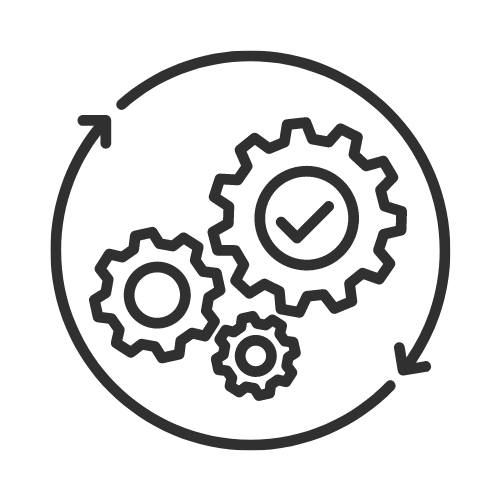This article expresses my opinion only. None of what is presented here is medical advice!
Trends in obesity1 continue to rise, even in the very young and young adult population of today. It’s clear that, as a society, we haven’t found a way to turn the tide of fat weight gain and unhealthy living.
We are all "guilty" of an unhealthy life style from time to time; enjoying good food in a restaurant, on a holiday, having a beer with friends. It's food that can heal the soul, as they say.
Beyond the social and cultural aspects of food. We need to also be mindful that it impacts our health in fundamental ways if we do not moderate "food as pleasure".
 Obesity is defined as body mass index (BMI) at or above the 95th percentile from the sex-specific BMI-for-age 2000 CDC Growth Charts1
Obesity is defined as body mass index (BMI) at or above the 95th percentile from the sex-specific BMI-for-age 2000 CDC Growth Charts1
Perhaps you recognize a few of the following scenarios in your own life:
- Yo-yo dieting. You loose fat, the next month it's all back again, then you loose it again. Rinse and repeat.
- The plateau of despair, you've hit a wall in your weight loss journey, it just doesn't seem to come off no matter what you do.
- Excessive cardio to try and "burn those calories" and loose fat. It never seems to work for long.
In this article I’ll hopefully raise some awareness on what kind of tools we could use to start getting control over health.
How can we manage our health in a more holistic way?
To break this trend of fat gain, we need to start asking questions about; what we believe to be true, and what we are not aware of.
Today, lets consider the following questions to start out with:
- How do we measure what we eat, and is it accurate? If not, is there a better way?
- What other factors influence weight gain and general health?
Topic outline
TLDR
For an actionable Health plan you can start implementing today. Start here
If you're interested in the background of my recommendations and viewpoints, read on or select from the topics of interest below.
- What happens when we eat?
- What are Calories? and do we need them?
- What about Hormones?
- Calories In, Calories Out (CICO) is fundamentally broken
- 3 Steps towards a more holistic Health approach
- Conclusion
What happens when we eat?
Food (or drink for that matter) of any combination, is a set of macro nutrients and micro nutrients. For the purpose of this discussion we focus only on the macro nutrient content.
(1) Macro nutrients are:
- Carbohydrates: For example from wheat, potatoes, broccoli etc.
- Fats from meat, fish, eggs, avocado etc.
- Proteins: typically from meat, fish, eggs as well.
Alcohol can be considered a macro nutrient (or a combination of a carbohydrate and fat). Typically it is included in Caloric break downs of what is eaten. We won’t consider it in this discussion.
The diagram then depicts that these macro’s are essentially mass (2), a scientific term to indicate; “An object that is under the influence of gravity”.
Simply speaking, the object has a weight expressed in grams for example. This concept of mass will become relevant later on.
These macro’s are then eaten and turned into;
- (0) Oxygen is used to
oxidizemass that can then be used for “energy” and other purposes. Note: Food does not get “burned”, as may be typical in speaking language. - (3) Hormones play a role in how that mass is used depending on which macro it is (among other things)
- (4) Waste or byproducts of the chemical reactions of transforming the Macro nutrient content (1) into "waste" such as; water vapor, CO2 from breathing, heat through your skin and feces.
- (5) Some of that mass will be retained by the body in the form of; muscles, fat or other supporting tissue and repair of tissue damage. Other mass is turned into ATP as energy to perform activities such as running, and walking.
All of this is determined by your body’s homeostasis, which essentially means that the body will try to keep a steady state using feedback loops (of which your Hormones) to try and keep it stable under the influence of your environment.
With these feedback loops your body regulates; body temperature, pH, blood sugar levels, blood pressure, body weight, and many more systems for optimal body function.
This homeostasis concept is different for everyone. We all have had different dietary patterns, exercise history, exposures to good air, bad air, chemicals etc..
If it's different for everyone because of our environment, food, exercise, etc. That means we can also change our hemeostasis for the better.
This concept of homeostasis, and how we are influencing it. Is important to understand such that we can see why counting Calories has a few issues,
What are Calories? and do we need them?
A calorie is a unit of energy, not a measure of weight or nutrient density. The calories you see on nutrition labels, however, are actually kilocalories, or kcals.
Typically these two methods are used to measure the caloric value of a food item:
- Bomb Calorimetry: Scientists place the food in a sealed container surrounded by water and heat it until the food is completely burned off. The rise in water temperature (in milliliters; ml) is recorded to determine the number of calories in the food item.
- Note there’s a piston in the Calorimeter to which a force is applied by expanding gasses inside the container. However, it’s typically ignored in the final calculation.
- The Atwater system uses the average values of 4 Kcal/g for protein, 4 Kcal/g for carbohydrate, and 9 Kcal/g for fat. Alcohol is calculated at 7 Kcal/g. (These numbers were originally determined by burning and then averaging measurements)
To measure is to know. — Lord Kelvin
The Calorie measurements are based on a closed system of which the energy release is measured.
What is Energy?
Generally speaking mass is a condensed form of energy, that's the well known Einstein formula
The Calorie concept does not deal with mass directly, instead what it measures is the heat increase in a closed thermal system.
This means we need to look at The First Law of Thermodynamics, which states:
Energy can be converted from one form to another with the interaction of heat, work and internal energy, but it cannot be created nor destroyed, under any circumstances
is the change in energy, is the heat added to the system, the food burned. is the work done on the system.
Work is defined as: :
- = Force is calculated as
- = Mass. It must have a weight.
- = Acceleration, i.e. driving away at a green traffic light.
- = Distance, measurement of how “much”. e.g. meters or as a volume; liters.
W in the context of the calorimeter, applies to the piston inside of the container getting pushed by expanding gasses. W is typically ignored since it’s a very small value.
Calories are therefore expressed as:
Better would be; where C is the heat capacity of the calorimeter (known) and ΔT is the temperature change of the water (measurable).
A calorie is a unit of heat energy.
How is body weight affected?
Body mass can only be changed by absorbing mass, and by excreting mass across the system boundary.
If calories do not have a mass, and they're measured within a closed thermodynamic system. Then we can already identify a few problems:
1. The body is an open thermodynamic system
We exchange mass and heat with the outside world, we are not a closed "container" that heats mass to “get energy” without further interactions with the environment.
2. The body is not a perfect “machine”
We loose energy via; heat, waste products, exercise etc.
The Second Law of Thermodynamics introduces the concept of entropy. In the context of the human body that means:
Entropy is increased as energy is lost through various means, such as heat ( in our calorie example), waste products, and exercise. The human body is not a perfect energy converter.
That means when you eat food, we have more byproducts than just calories ("Calories Out").
3. The body does not burn calories, it converts mass to other mass.
This process of mass "conversion" is expressed in this diagram:
- Conversion of mass occurs with oxygen (0), inhaled via the lungs.
- The oxygen interacts with macro nutrients (oxidizing).
- Creating other molecules under the influence of your hormones (among other things) (3).
- With the end results as CO2 (4) and H2O (5).
- H20 is added to pools of water and is partly excreted by the kidneys for example (4).
What about Hormones?
Hormones affect numerous systems in your body to do with metabolism, sleep, hunger, satiety, and stress among many more.
Your macro food intake interacts with your endocrine system (hormones) as soon as it is eaten.
A few examples of macros eaten and how they can effect hormones and your body weight;
The Insulin-Carbohydrate Dance
When you consume carbohydrates, your body breaks them down into glucose, which enters the bloodstream. This triggers the release of insulin, a hormone that helps transport glucose into cells for energy. Insulin also promotes the storage of excess glucose as glycogen in the liver and muscles. If glycogen stores are full, insulin can signal the conversion of glucose into fatty acids, which are then stored as fat. So, a high-carb diet can lead to weight gain through this mechanism.
The Insulin-Human Growth Hormone Connection
When insulin levels are high, as after a meal, the body is in a state of energy storage. In this state, growth hormone production is suppressed, as the body does not need to mobilize stored energy.
On the other hand, when insulin levels are low, as during fasting or exercise, the body is in a state of energy mobilization. In this state, growth hormone production is increased, to promote the breakdown of stored fat and protein for energy.
This means body weight changes in this context is affected by;
- meal frequency and,
- macro content
- fat does not produce an insulin response,
- protein a little bit,
- carbohydrates more depending on the type of carb how much.
The Glucagon-Protein Tango
Glucagon is a hormone that counteracts insulin by promoting the breakdown of glycogen and the release of glucose into the bloodstream.
It also stimulates the production of ketone bodies from fatty acids, which can be used as an energy source.
A high-protein, low-carb diet can increase glucagon levels, potentially leading to weight loss through increased fat burning.
To hammer it home
A few extreme examples to hammer home the point. Hormones are very essential in the weight management equation.
Type 1 diabetics cannot store fat, cannot create muscle. Type 1 Diabetics loose lean tissue even though they are eating a ‘calorie surplus’.
Cushing’s syndrome is a disorder related to the overproduction of cortisol, which then causes the accumulation of fat around the trunk and can be difficult to distinguish from ordinary obesity
Weight (fat, lean tissue, water weight) is managed demonstrably by your hormonal state in a very fundamental way.
Calories In, Calories Out (CICO) is fundamentally broken
The concept of calories is presented in a way as if it can track your daily food and energy requirements. However none of these two goals are true.
- Calories do not distinguish between macros and your hormonal state.
- Different macro compositions, cause fundamentally different outcomes in the body. Under the influence of your hormone status, and it’s feedback loops. A macro can attribute to:
- fat tissue.
- tissue creation such as; bones, ligaments, muscles etc.
- mass excretion through the skin and feces.
- mass use for energy, ATP.
- Different macro compositions, cause fundamentally different outcomes in the body. Under the influence of your hormone status, and it’s feedback loops. A macro can attribute to:
- Calories are an erroneous accounting concept in the context of Human diet.
- Food is not energy, it is mass. Some of the consumed mass can be turned into ATP (mass that can be used as “energy”).
- The body is an open system that interacts with its environment.
- It’s not a closed container where food is “burned”.
A more appropriate substitute for CICO would be Mass In, Mass Out (MIMO).
3 Steps towards a more holistic Health approach
1. Choose the correct Macro composition.
Consider eating only whole foods. That means not processed by a factory, but coming straight from the soil or an animal.
General rules of thumb with macros:
- Carbohydrates are the lever to control your fat gain/loss primarily.
- If you’re not on a low carb diet, you need to control this lever tightly based on;
- your exercise level
- and how you respond generally (your hormonal state). to carb intake and which carbs may be more problematic for you than others.
- If you’re not on a low carb diet, you need to control this lever tightly based on;
The main staple of your diet should be Fat and Protein:
- Protein is a dietary requirement to build muscle, bone and ligament tissues that are essential for health.
- Protein requirement calculation that I use:
- 2 grams per Kg. of ideal body weight for a typical individual. If you’re a body builder, in that case you’re likely beyond this ratio.
- Protein requirement calculation that I use:
- Fat is essential for hormone production, for the heart and brain to function optimally.
- Fat, eat the rest of your food intake as fat. Ideally this should be as high as possible, carbs as low as possible.
Ideally you would eat a low-carb diet, this provides the best control over weight (fat loss) and it will improve many health markers.
This is a topic of discussion I’d like to get into in the next article.
2. Track your health over time
When you’ve created a general macro outline; e.g. 50 grams of carbohydrates, 200 grams of protein and 200 grams of fat.
To begin measuring your health status;
- Track your (fat) weight over time;
- Minimum amount of time to get a sense of your average weight is 1 week.
- To track changes across time, you would need to track for at least a month to get a sense of a weight trend.
- Track your consistency with exercise such as walking daily and doing weight based training regularly.
- Manage your stress levels (Cortisol) during the day and weeks.
- Sufficient sleep here is important, by:
- Setting your proper circadian rhythm with fixed sleep times, and getting sun light in the morning, afternoon, and early evening.
- Avoid blue light after sun down by using blue light filters (glasses if possible).
- Sufficient sleep here is important, by:
Cortisol can have big effects on your physical composition!
In extreme cases Cortisol will eat away at your lean mass to get quick glucose. Or it can start to increase fat storage, making you gain fat weight.
3. Adjust based on your situation, repeat.
If your fat weight is increasing? Consider:
- Using the carbohydrate lever, and track again for a couple of weeks to see if the weight trend adjusts.
- Or, perhaps it’s an increase in stress from work?
- Perhaps, it's a lack of sleep?
- Or a combination of all of them?
Consider the factors involved, adjust those dials, and measure.
A few notes about cravings (Ghrelin) and fullness (Leptin) after eating:
- The higher the Insulin response from your food (carbohydrate intake amount), the higher the Ghrelin response afterwards. High Ghrelin makes you want to eat again.
- Excessive carb intake can blunt the Leptin signalling (the feeling of fullness), that can also make you binge eat. Usually people that have normal body type and high fat mass (visceral fat), are susceptible to this!
Conclusion
We have established that the calorie concept isn’t very helpful for Health management (and fat weight loss for that matter).
Instead, by applying a more holistic approach you should consider;
- Your Health, and hormone status.
- What you eat. How much of it you eat (in macros) measured by weight (grams, ounces, etc).
- Exercise habits,
- and general stress control.
This approach will provide you with a more holistic view on Health rather than just a fat loss viewpoint with an accounting system (CICO).
I realize there are many other factors that were not discussed or explained in detail. Such as;
- Optimal diet
- Exercise
- Sleep
- Light (sunlight, blue light)
- and stress regulation.
In the articles yet to come, I’ll provide my perspective on how we can continue this Health journey with more actionable insights.
Please let me know on Twitter if you have any questions or shoot me a mail!
Subscribe to my newsletter below for more Health insights!
References
-
United States trends in Obesity: https://www.niddk.nih.gov/health-information/health-statistics/overweight-obesity ↩ ↩2




